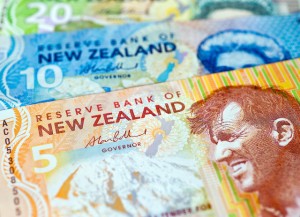Here’s today’s ‘Just A Minute’ bringing you a 60 second summary of what’s happening in the markets:
Main Trading Events Of The Day: USD Retail Sales m/m @ 12.30 & USD Unemployment Claims @ 12.30 GMT
WHAT WE’RE WATCHING TODAY
U.S. Retail Sales & Unemployment Data Releases
Economists expect to see an increase of 0.2 percent when February retail sales are reported today, better than January’s 0.4 percent decline. The retail “control” number is expected to be up 0.3 percent. This number relates to retail sales, minus autos, gasoline and building materials and could positively influence first quarter GDP. Besides retail sales, weekly jobless claims are expected today. The unemployment rate was at 6.7 percent last month. Traders will also be watching the testimony before the Senate Banking Committee, in particular, for remarks about the Fed’s current policy and the focus on financial stability since economic normality has not yet been restored. The hearing puts the focus on next week’s Fed meeting, the first to be presided over by Fed Chair Janet Yellen. How the Fed will back off from its unemployment target of 6.5 percent is of major interest to markets and is likely to be a topic next week. Fed officials have been backing away from their target of a 6.5 percent unemployment rate set as a level to begin considering a reversal of its low short-term rate policy, stressing that it is a target, not a trigger. The Fed has the chore of moving markets away from ‘quantitative easing’ to ‘qualitative easing.’ It’s widely expected to reduce its bond purchases, or quantitative easing program, by another $10 billion next week.
New Zealand Dollar Jumps Following Key Rate Hike
The Reserve Bank of New Zealand increased its key interest rate by 25 basis points to 2.75%, in line with expectations. The New Zealand dollar rose to an intraday high late Wednesday in New York following the decision, trading at 85.18 U.S. cents versus 84.52 U.S. cents a day earlier. The decision behind the rate hike was attributed to increasing inflationary pressures. According to the central bank, in the current environment it is important that inflation expectations remain contained and to achieve this, it is necessary to raise interest rates towards a level at which they are no longer adding to demand. The central bank said its key interest rate, the official cash rate, would need to rise by about 2 percentage points in the next two years for inflation to remain near its target of 2% in the medium term.
Apple & Twitter Amongst Leaders As Tech Stocks Rise
Gains across the board lifted the tech sector on Wednesday with advances from Apple Inc and Twitter Inc. Apple rose 52 cents to close at $536.61 while Twitter rose almost 1% to close at $54.50, showing no ill effects from what the company called a “service issue” that shut down the messaging and information site for most of an hour on Tuesday. Microsoft Corp. edged up by 25 cents a share to close at $38.27. Late Tuesday, the world’s largest software company said it appointed ValueAct Capital president Mason Morfit to the Microsoft board of directors. Microsoft also declared its annual quarterly dividend payment of 28 cents a share, payable on June 12. King Digital Entertainment Plc also garnered attention as the maker of the popular “Candy Crush Saga” mobile phone game set a range of $21 to $24 a share for its upcoming IPO , which is expected in late March. The Nasdaq Composite Index ended the day with a gain of 16 points to close at 4,323.
That sums up today’s highlights! We hope you have a profitable day on the markets.




